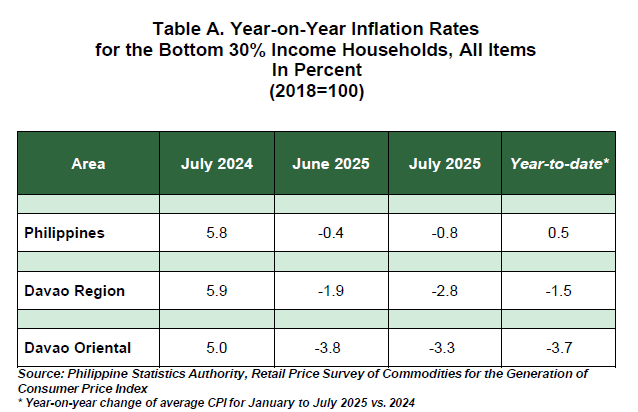
he inflation rate for the bottom 30% income households in the province was recorded at -3.3 percent in July 2025 from -3.8 percent in the previous month. In July 2024, the inflation rate was posted at 5.0 percent. (as shown in Tables A and B, and Figure 1)
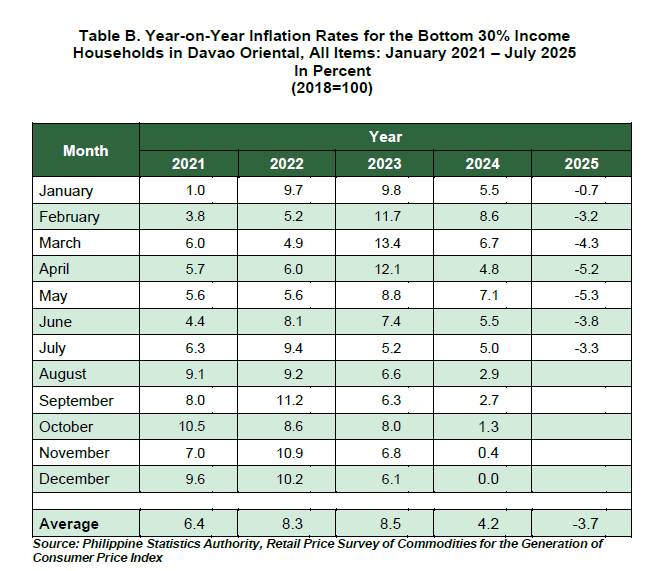
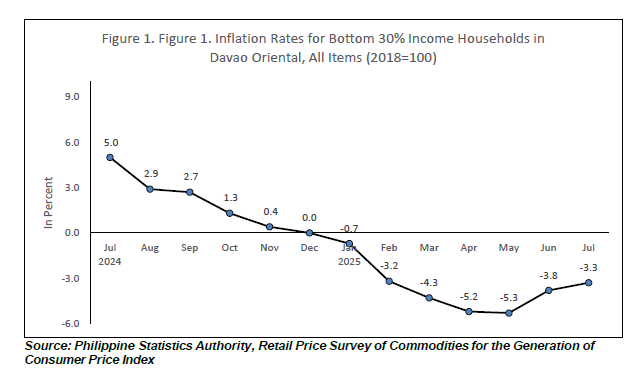
The uptrend in the overall inflation for the bottom 30% income households in July 2025 was primarily brought about by the faster annual increment in the index of the heavily weighted housing, water, electricity, gas and other fuels at 0.8 percent during the month from a -2.3 percent annual decrease in the previous month. The indices of food and non-alcoholic beverages, and transport also contributed to the uptrend of the overall inflation, registering an annual increases of -5.2 percent from a -5.4 percent, and -6.1 percent from -7.7 percent in the previous month, respectively.
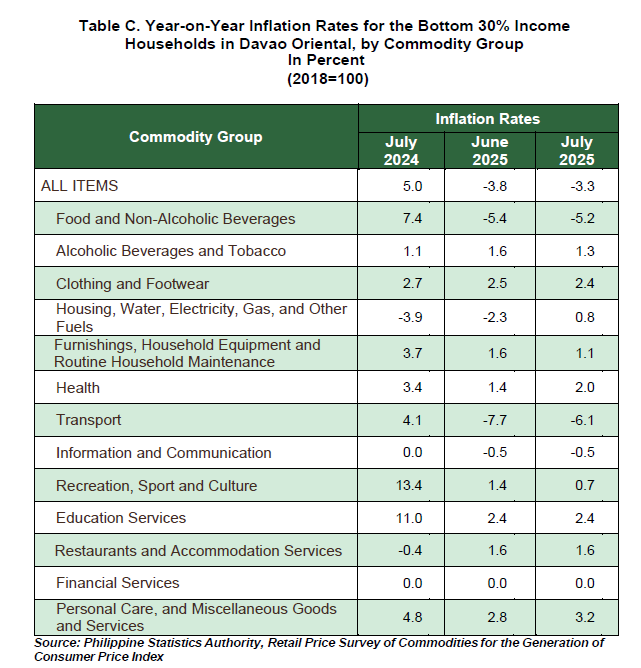
In contrast, lower annual increases were noted in the indices of the following commodity groups in July 2025:
a. Recreation, sport and culture, 0.7 percent from 1.4 percent;
b. Furnishings, household equipment and routine household maintenance, 1.1 percent from 1.6 percent;
c. Alcoholic beverages and tobacco, 1.3 percent from 1.6 percent;
d. Clothing and footwear, 2.4 percent from 2.5 percent.
The indices of the rest of the commodity groups retained their respective previous month’s annual rates. (as shown in Table C)
Food inflation for the bottom 30% income households at the provincial level moved at a higher pace of -5.8 percent in July 2025 from -5.9 percent in the previous month. In July 2024, its annual increase was observed at 7.9 percent. (as shown in Table D)
The acceleration of food inflation was mainly due to the annual increase in the indices of fish and other seafood at 5.1 percent from -4.0 percent, milk, other dairy products and eggs at 13.9 percent during the month from 11.7 percent, fruits and nuts at 24.1 percent from 22.7 percent, ready-made food and other food products n.e.c at 2.3 percent from 1.5 percent, and sugar, confectionery and desserts at 6.0 percent from 5.9 percent in the previous month.
Moreover, lower annual increases were noted in the following food groups:
a. Vegetables tubers, plantains, cooking bananas and pulses, -4.9 percent from 2.7 percent;
b. Rice, -19.1 percent from -16.2 percent;
c. Cereals, -21.3 percent from -18.6 percent;
d. Cereals and cereal products, -18.7 percent from -16.2 percent;
e. Corn, -28.3 percent from -26.1 percent;
f. Flour, bread and other bakery products, pasta products, and other cereals, 0.7 percent from 1.0 percent;
g. Meat and other parts of slaughtered land animals, 6.1 percent from 6.4 percent.
The indices of the rest of the food commodity groups retained their respective previous month’s annual rates. (as shown in Table D)
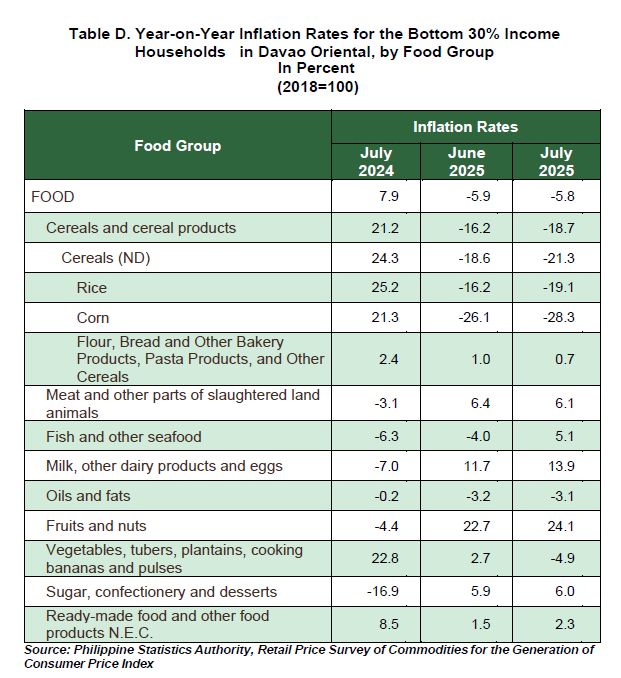
TECHNICAL NOTES
Uses of CPI
The CPI is most widely used in the calculation of the inflation rate and purchasing power of peso. It is a major statistical series used for economic analysis and as a monitoring indicator of government economic policy.
Computation of CPI
The computation of the CPI involves consideration of the following important points:
a. Base Year/Period - A period, usually a year, at which the index number is set to 100. It is the reference point of the index number series.
b. Market Basket - A sample of the thousands of varieties of goods purchased for consumption and services availed by the households in the country selected to represent the composite price behavior of all goods and services purchased by consumers.
c. Weighting System - The weighting pattern uses the expenditures on various consumer items purchased by households as a proportion to total expenditure.
d. Formula - The formula used in computing the CPI is the weighted arithmetic mean of price relatives, the Laspeyre’s formula with a fixed base year period (2006) weights.
e. Geographic Coverage - CPI values are computed at the national, regional, and provincial levels, and for selected cities.
Note: CPIs and inflation rates by province and selected city are posted at the PSA website (https://openstat.psa.gov.ph/).
Approved for release:
EMILY P. TOMOGDAN
Chief Statistical Specialist
